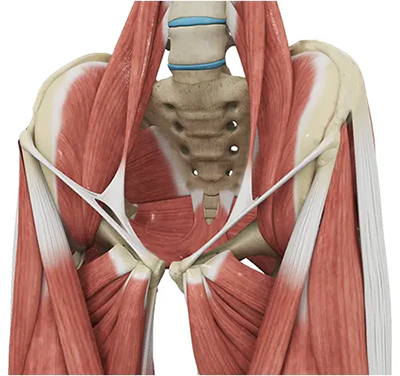Ehlers Danlos Syndrome

What is Ehlers Danlos Syndrome?
Ehlers Danlos Syndrome (EDS), is a condition characterized by widespread hyper flexibility in the body. The condition is caused by genetic predispositions that alter the elastic qualities of soft tissues in multiple organ systems. Due to the condition's systemic effects, EDS can cause complications relevant to many areas of medicine outside of orthopedics.

Causes of Ehlers Danlos Syndrome
EDS is a congenital condition that alters the production of soft tissues and cellular matrices that contain a type of protein called collagen. For soft tissues to function properly, structures need flexibility to move but require stiffness to absorb force safely. Patients with EDS oftentimes suffer from musculoskeletal pain due to hypermobility in their joints and may dislocate frequently. EDS can be confused with:
- Traumatic injuries
- Hip dysplasia
- Muscular weakness or instability
- Torn muscles, tendons, or ligaments

Symptoms of Ehlers Danlos Syndrome
- Multiple double-jointed joints
- Frequent dislocations
- Unusually high flexibility
- Instability
- Pain after activity requiring extreme ranges of motion

Diagnosis of Ehlers Danlos Syndrome
EDS requires a variety of tests to be diagnosed. Your doctor will carefully review your symptoms and medical history and perform a physical examination. Diagnostic tests for EDS syndrome include:
Physical Examination: A mobility test called The Beighton Score can be used to diagnose EDS. The test consists of several movements that assess flexibility at numerous joints and soft tissue structures.

Conservative Treatments
- Anti-Inflammatory Medication: Your doctor may recommend non-steroidal anti-inflammatory drugs (NSAIDs) to reduce pain and inflammation in the tissues.
- Rest and Activity Modification: Reducing or modifying physical activity can provide pain relief. Patients with EDS may be recommended to avoid extreme ranges of motion.
- Ice or Heat: Applying ice or heat can help manage pain.
- Physical Therapy: After a rest period, exercises are recommended to increase stability, improve balance, and correct muscular imbalances that may be developed with EDS.
- Orthobiologic Injections: Orthobiologic injections can be used to stimulate healing in joints or tissues irritated from the hypermobility associated with EDS.

Surgical Treatment
If conservative treatment methods are ineffective, and if the patient and physician feel necessary, surgical treatment can be recommended to account for the lack of stability in the hip associated with EDS. Below are possible surgical interventions for EDS:
- Capsular repair, reconstruction, or plication
- Ligamentum teres reconstruction
- Labral reconstruction

Physical Therapy
Rehabilitation following surgery usually takes about 6-8 weeks.
Persistent pain following surgery may require additional procedures, biotherapeutic injections, or physical therapy.
